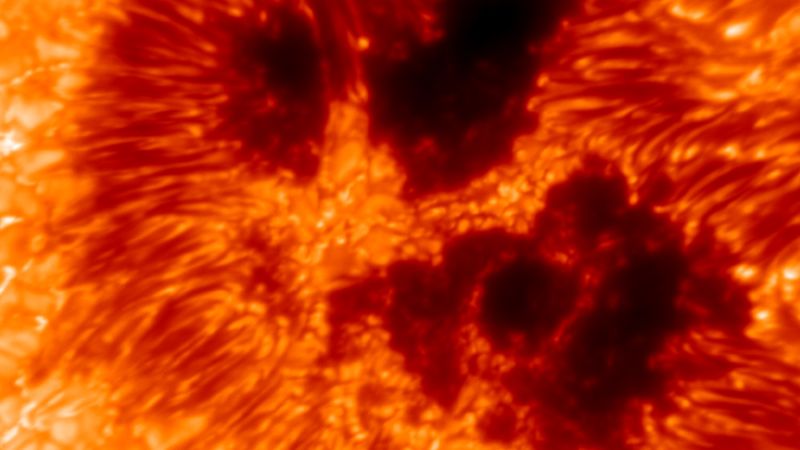Recent advancements in solar observation technology have yielded impressive results, with the US National Science Foundation’s Daniel K. Inouye Solar Telescope capturing stunning new images of the sun’s surface. These groundbreaking images, which were taken using the telescope’s newly designed Visible Tunable Filter (VTF), reveal the complex fiery nature of our closest star in previously unattainable detail. This innovative instrument allows for a three-dimensional examination of solar activity, offering insights into the dynamics occurring on the sun’s surface.
The images produced by the VTF present a striking depiction of the sun, including striking dark sunspots, which are large regions of intense magnetic activity. These sunspots are significant because they can lead to solar flares and coronal mass ejections (CMEs) — phenomena that involve explosive bursts of energy and plasma from the sun’s outer layers. The importance of capturing high-resolution images like these cannot be overstated; according to Friedrich Woeger, the NSF Inouye Solar Telescope instrument program scientist, such detailed observations are crucial for scientific understanding and predictions regarding potentially disruptive space weather.
Historical context accentuates this urgency. Woeger referenced the Carrington Event of the 1800s, a potent solar storm that disrupted telegraph systems globally, highlighting that understanding these solar phenomena is essential, especially as technological dependence increases. Solar storms can interfere with the Earth’s electromagnetic field and significantly impact critical infrastructures like electrical power grids and satellite communications.
The sun operates on an 11-year cycle characterized by fluctuating periods of magnetic activity, commonly referred to as solar maximum and solar minimum. In October 2023, scientists announced that the sun had reached its peak activity level with a surging appearance of sunspots. This timing presents an opportune moment for utilizing the Inouye Solar Telescope as it ramps up its functional capabilities to produce detailed images of solar dynamics.
Researchers use these images, which represent extreme close-ups of the sun, to investigate its thermal and magnetic properties. The process of image capture and analysis is akin to boiling soup, where heat emerges from the sun’s core and manifests on its surface through layered fluid motions. As Mark Miesch from the Cooperative Institute for Research in Environmental Sciences articulates, sunspots behave as “magnetic plugs” that hinder the heat from escaping, resulting in these darker, cooler regions.
The versatility of the VTF is also noteworthy. The instrument functions similarly to a radio tuner, allowing researchers to examine various layers of the sun’s surface by isolating different wavelengths of light. This ability is made possible through the established use of an etalon — two glass plates separated by tiny distances—enabling the instrument to filter specific wavelengths for detailed examination.
With the VTF’s advanced functionality, researchers can capture panoramic snapshots of the sun’s magnetic field and plasma structures, allowing for thorough examinations of its atmospheric layers. Initial tests and scans have generated excitement in the scientific community, with Dr. Stacey Sueoka, a senior optical engineer at the National Solar Observatory, describing the experience as surreal. The ability to conduct such analyses in a manner unmatched by other instruments provides a promising outlook for solar research moving forward.
Significantly, the VTF represents a decade-long development journey and is remarkable due to its scale and sophistication. Located atop Maui’s Haleakalā volcanic mountain, the instrument is strategically positioned to provide optimal solar observations. Following international collaboration in its design and assembly, the VTF is anticipated to become fully operational by 2026, marking a pivotal enhancement to the Inouye Solar Telescope’s capabilities. Dr. Matthias Schubert, a project scientist with the VTF, encapsulates its importance by asserting its role as the heart of the Inouye Solar Telescope, finally operational in its intended role.
This pivotal research effort aligns with a broader commitment within the scientific community to advance our comprehension of solar dynamics and their implications, paralleling other ambitious initiatives like the Solar Orbiter and NASA’s Parker Solar Probe. Together, these efforts signify a concerted push to enhance our understanding of the sun, its myriad phenomena, and the consequent effects they have on our planet.



